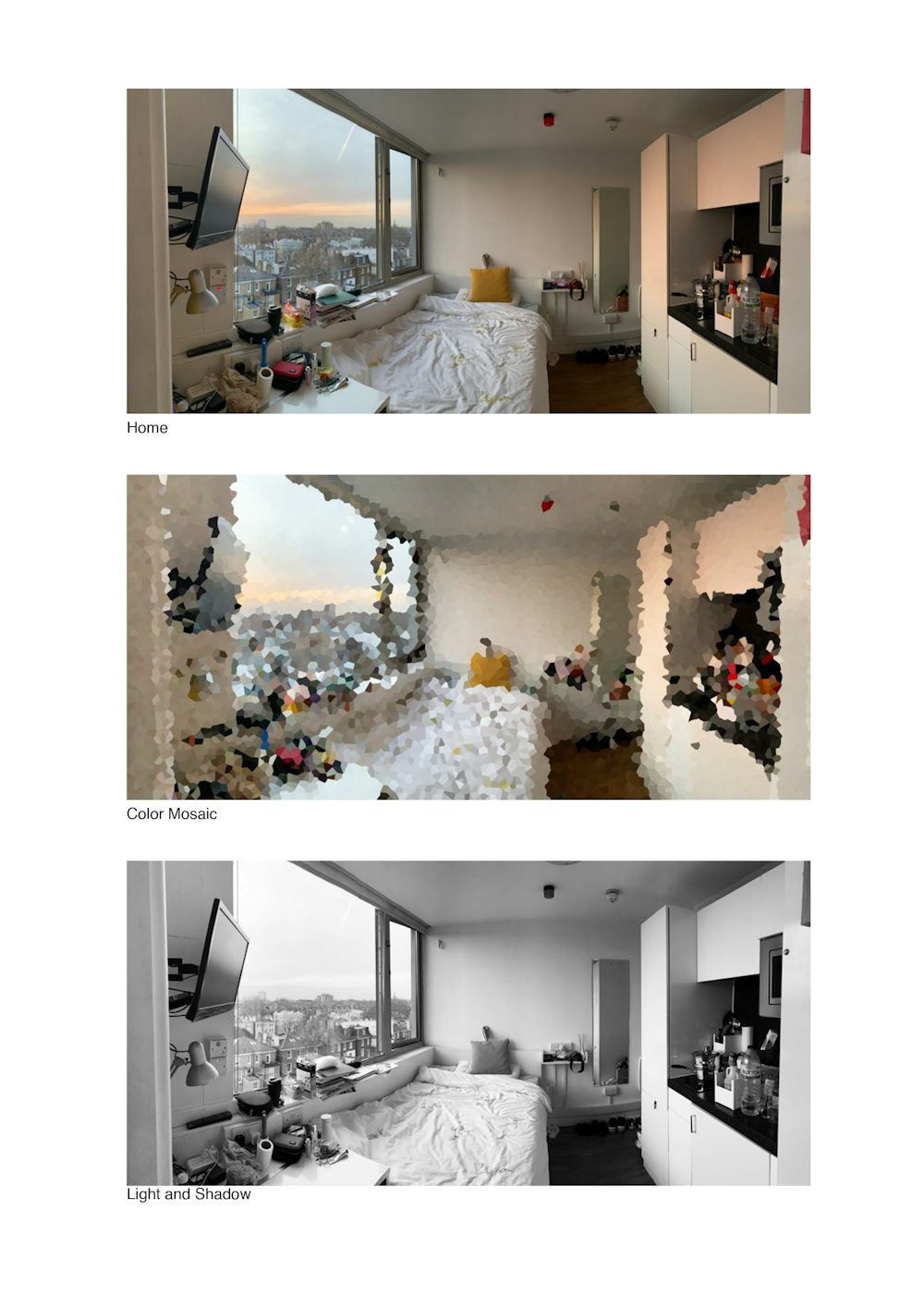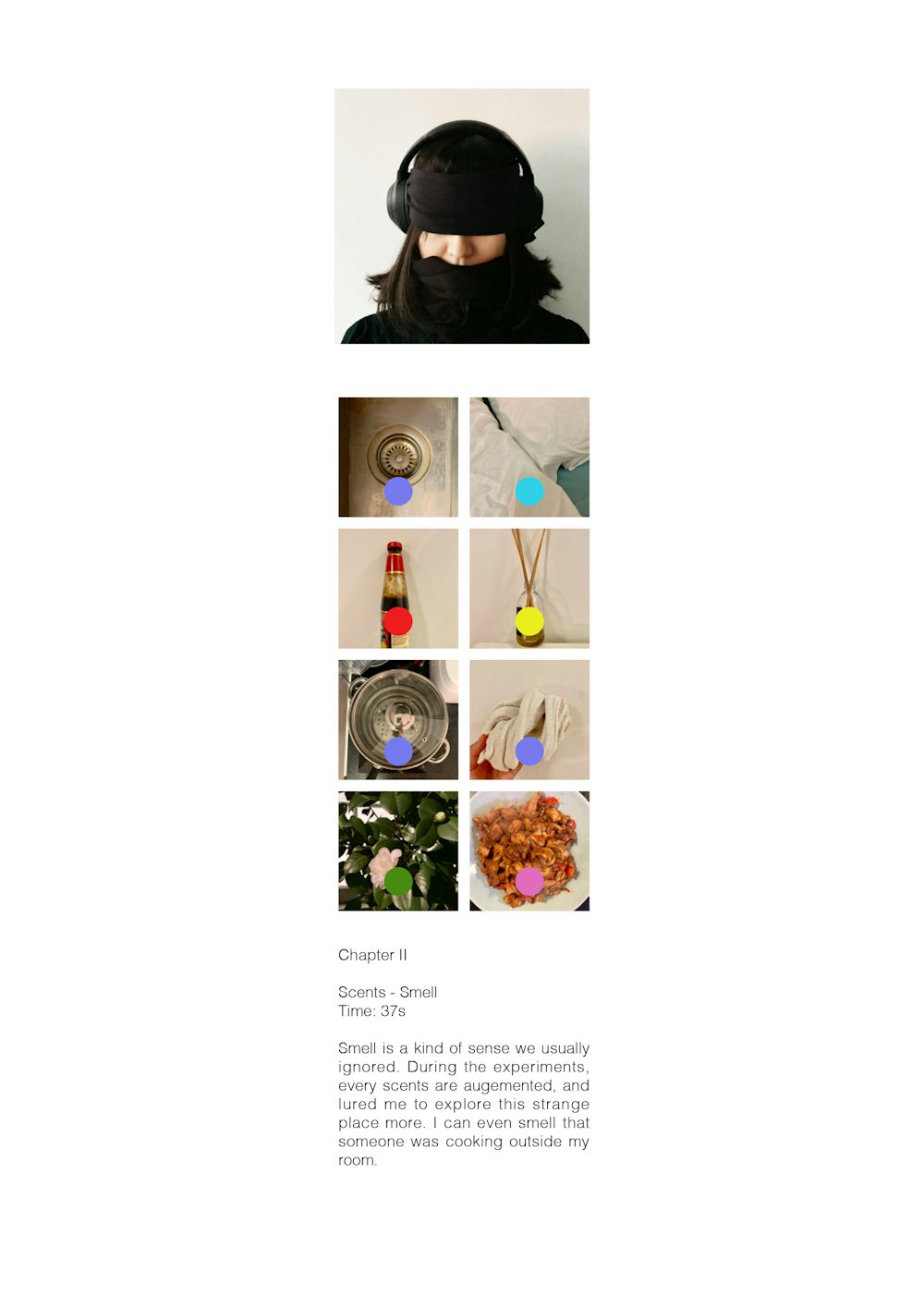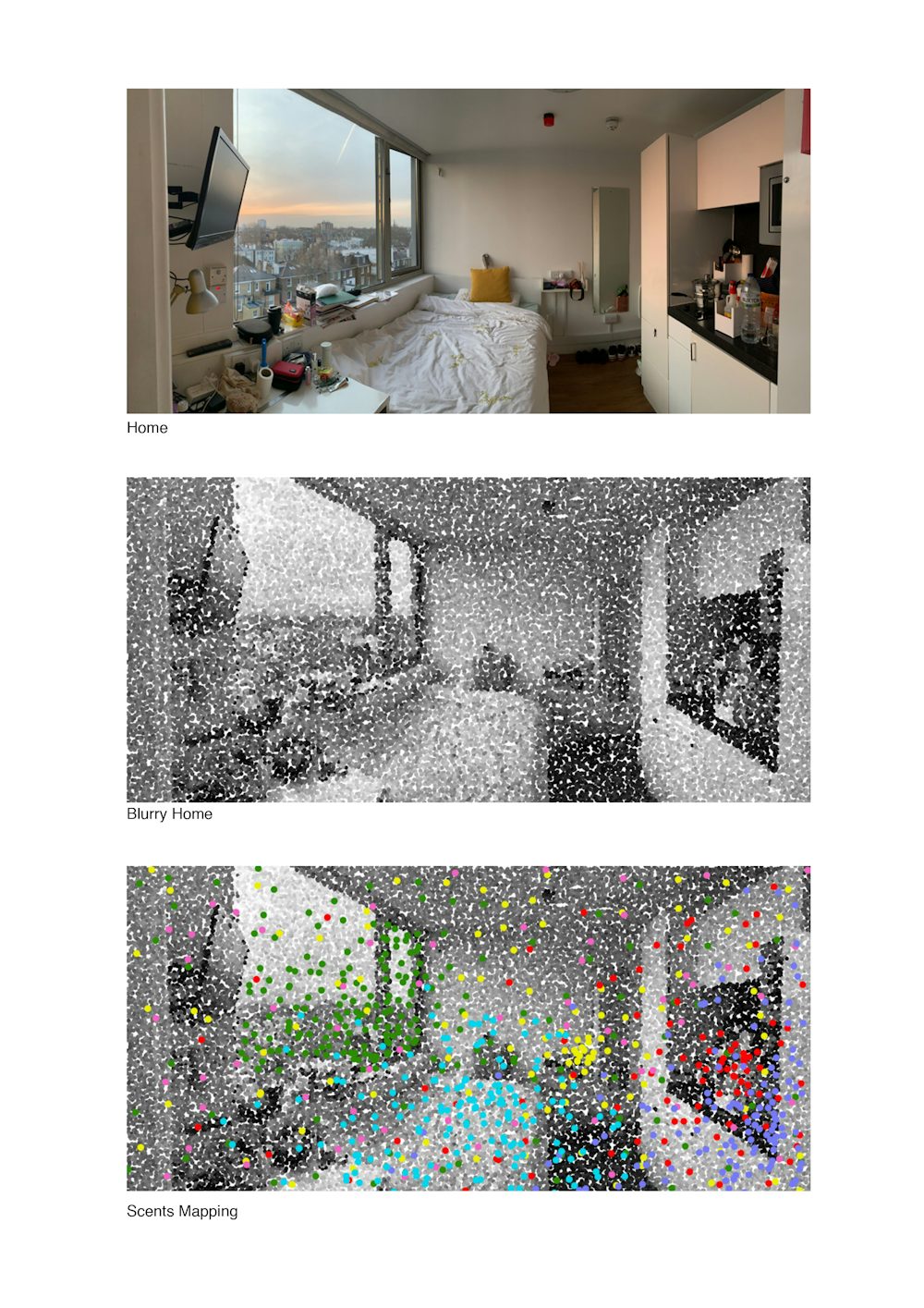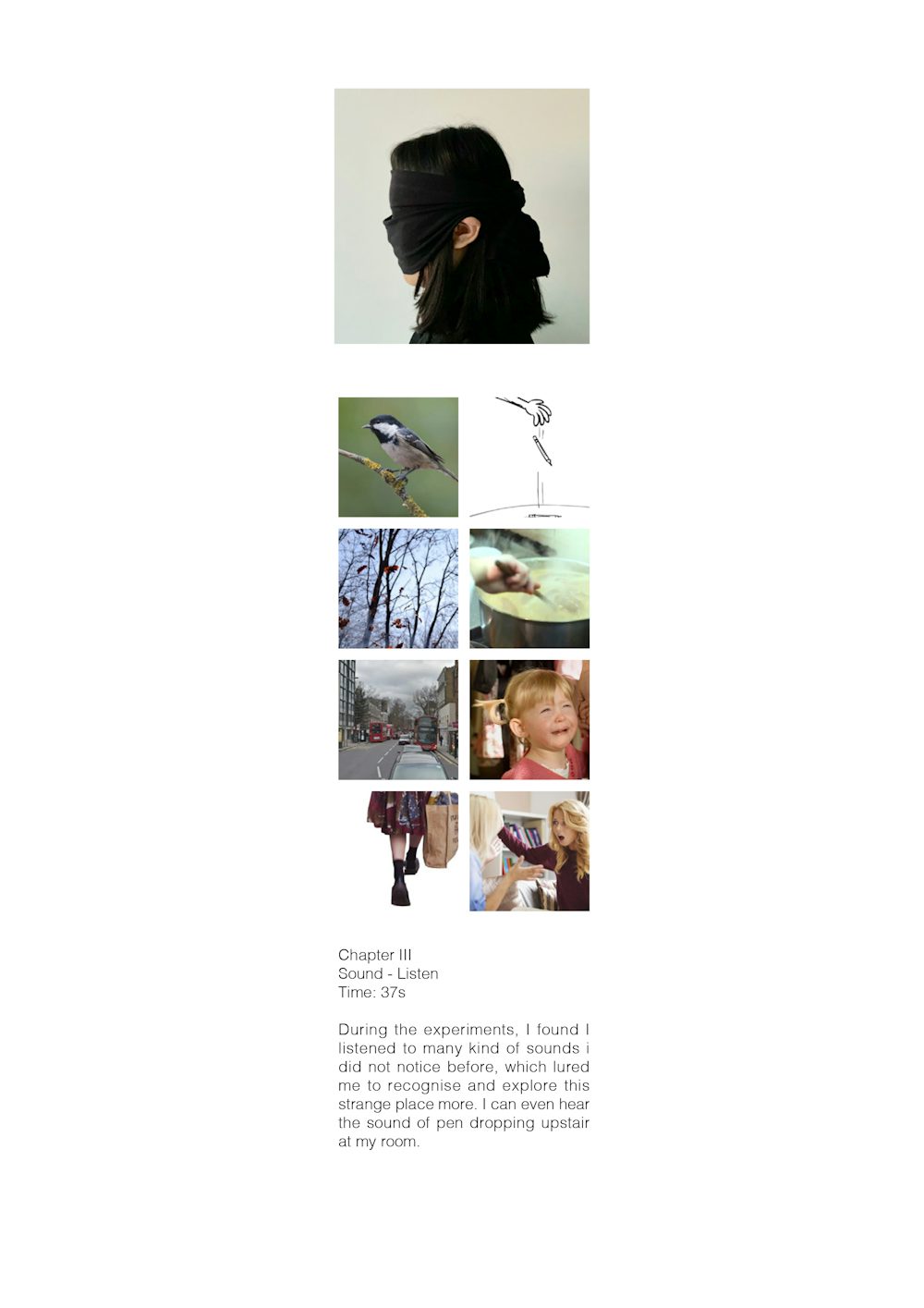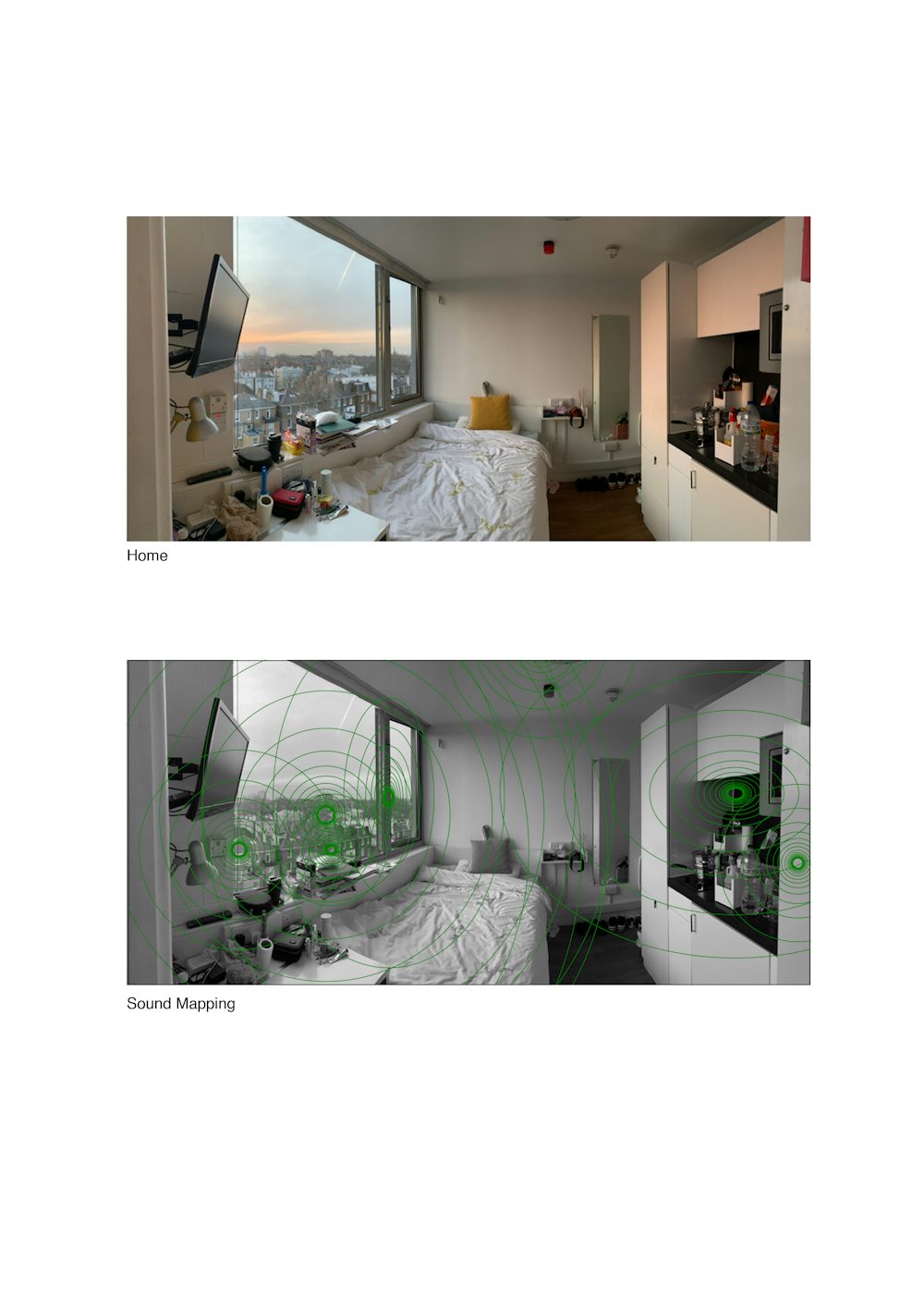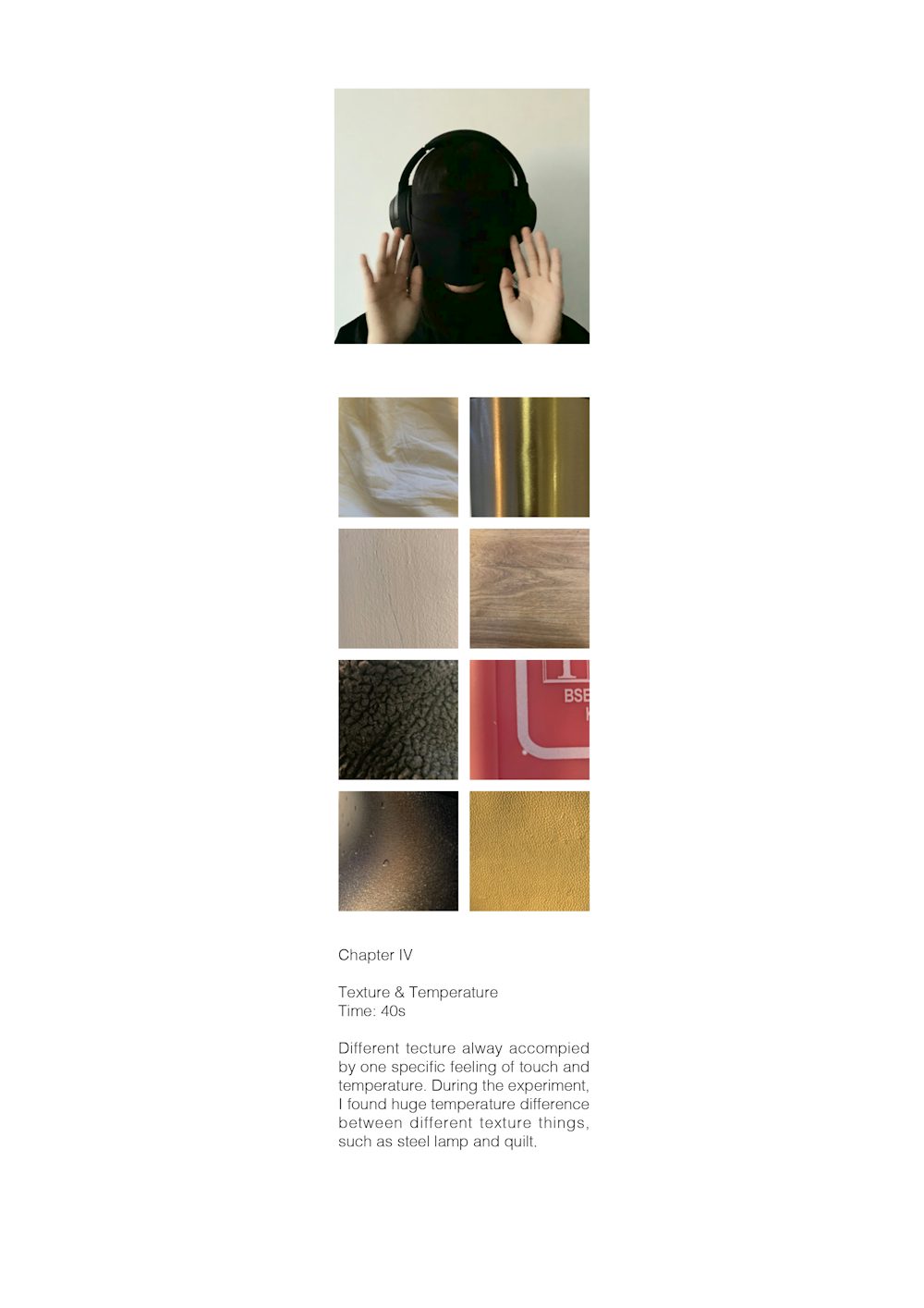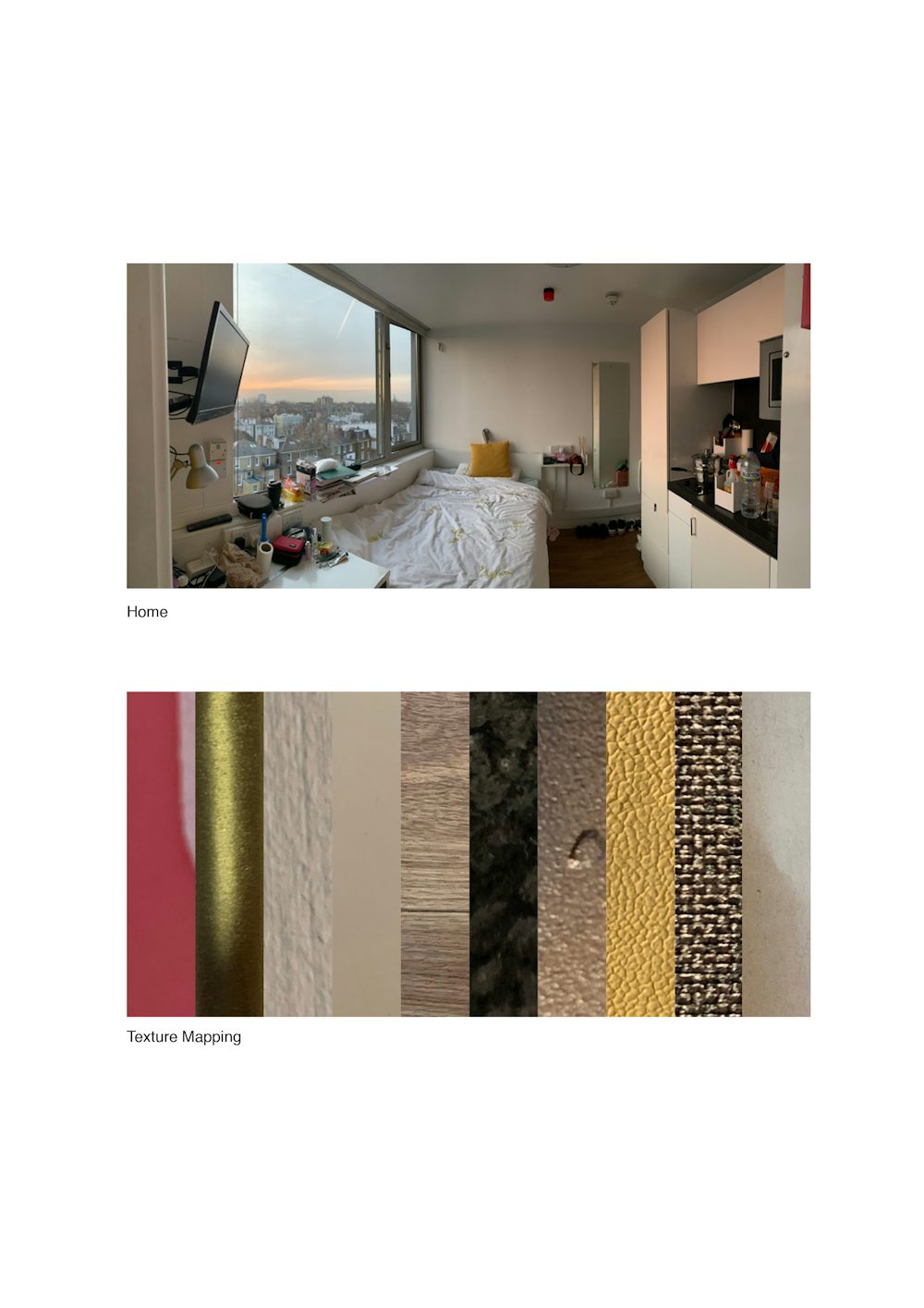Hao Zhou
"Blurry Boundaries - Perception Maps of Home"
Keywords: atmosphere, mapping, environment, moving image, photography, home, music/sound, materials
Our relations with the earth are mediated through technologies and techniques of visualisation, sonification, calculation, mapping, prediction, simulation, and so forth: it is through and in media that we grasp earth as an object for cognitive, practical, and affective relations.1
In this project, I’m interested in exploring sensory boundaries within an enclosed space, and the way in which they either correspond to or trouble our relationship with the material boundaries and partitions that we encounter in our everyday life. My proposal is based on the idea that humans tend to experience the atmosphere of the building, rather than its materiality.2 Therefore, I want to explore the notion of atmosphere as a medium through which we encounter and perceive the ‘real world’.
The ubiquitous maps we use nowadays (such as Google maps, or architectural plans and drawings) do not attempt to define or represent the atmosphere of objects, nor the blurry boundaries between the microclimates these objects generate. Such microclimates tend to be complex, consisting of various components, such as light, wind and sound, often hard to define through conventional architectural drawings. The material thresholds do not always prevent these components from permeating the enclosed spaces. Therefore, the real perception map is supposed to be ephemeral and has blurry boundaries of microclimate more than that of a material tangible world.
Through my project I want to challenge the concept of commonly used maps by highlighting intangible boundaries, and try to visualise atmosphere as a form of intangible existence. I do this through the experience of my own home. I have recorded the process, analysed the reaction, and mapped out the influences at the time of the recording. For my video, I recorded 4 experimental processes of experiencing familiar home atmosphere in an ‘abnormal way’. In order to distinguish between my usual multi-sensory way of experiencing my home environment, I focused on one sense at a time. These separate experiences have been visualised and mapped out according to the following parameters:
- Light & Color | Sight | Vision;
- Scents | Smell | Olfactory;
- Sound | Listen | Auditory;
- Texture & Temperature | Touch | Tactile Sensation



